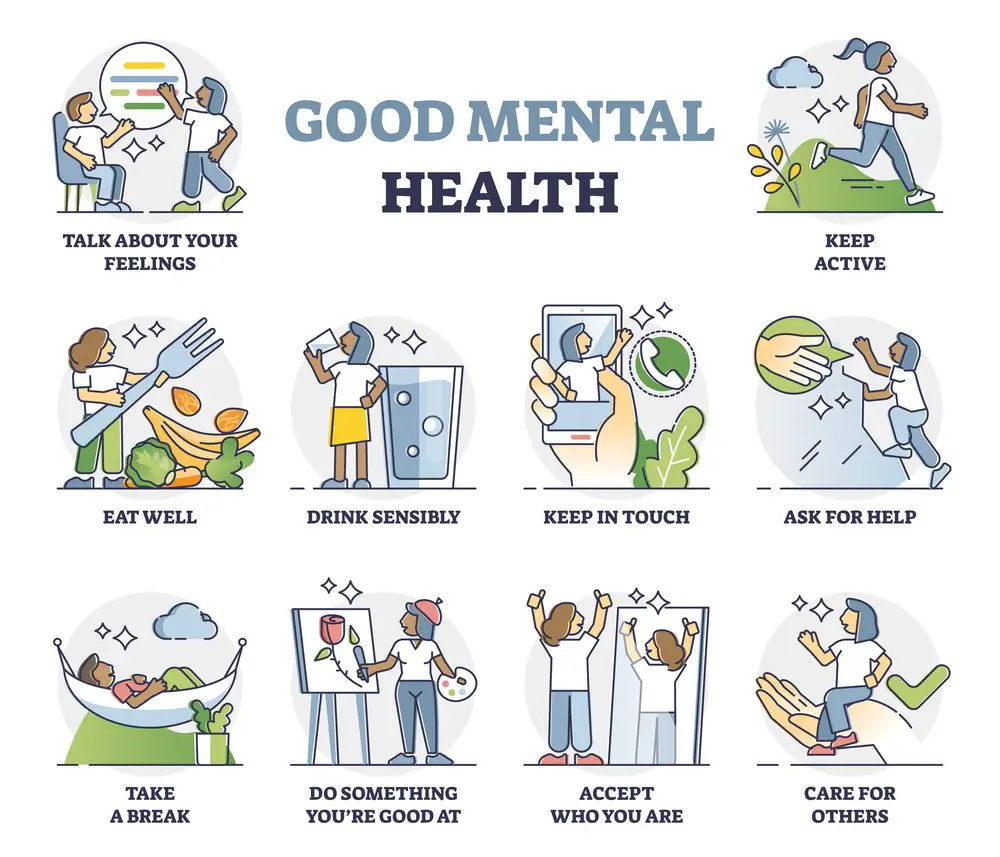As a BetterHelp affiliate, we receive compensation from BetterHelp if you purchase products or services through the links provided
Reintegration therapy is a therapeutic process aimed at helping divided families rebuild relationships, particularly in situations where a child has become estranged from a parent or caregiver. Typically used in high-conflict separations or divorces, this therapy focuses on establishing trust and communication between the child and the estranged parent. It’s a delicate balance, requiring patience and a willingness to heal past hurts.
Professionals play a crucial role in reintegration therapy – they guide the process and ensure that it’s carried out psychologically and legally appropriately. The process often involves counseling, education, and various forms of support for both the parent and the child. It seeks to address the emotional and mental health challenges that come with estrangement and works towards developing healthy family dynamics.
Key Takeaways
- Reintegration therapy assists families in repairing relationships post-conflict or separation.
- Skilled professionals guide the therapy, focusing on communication and trust.
- The process is tailored to address psychological well-being and legal matters related to family dynamics.
 Understanding Reintegration Therapy
Understanding Reintegration Therapy
Reintegration Therapy is a specialized form of family therapy aimed at helping family members rebuild relationships. It’s particularly important when you’re dealing with the aftermath of separation or estrangement.
Core Principles
Reintegration Therapy is built on several fundamental principles:
- Trust Restoration: Repairing the trust that has been eroded in family relationships.
- Communication Skills: Teaching you and your family members effective ways to communicate.
- Emotional Understanding: Facilitating the expression and understanding of complex emotions within the family dynamic.
These principles guide the therapist as they work with you to mend the bonds with your loved ones.
Goals of Reintegration Therapy
The objectives of Reintegration Therapy are straightforward yet vital:
- Reunification: Allowing you and your estranged family members to come together in a safe, controlled environment.
- Mental Health Improvement: Working on individual mental health concerns that affect family dynamics.
- Relationship Building: Helping you develop the skills to create and maintain healthy relationships going forward.
The endgame is to empower you with the tools and emotional insights necessary for lasting, positive change within your family unit.
Key Takeaway: Reintegration Therapy is about healing fractured relationships through trust, communication, and emotional understanding to achieve a harmonious family life.
 The Role of Professionals
The Role of Professionals
When stepping into the world of reintegration therapy, you’re stepping into a team effort. Mental health professionals like psychologists and psychiatrists often lead the charge. They provide a supportive framework, guiding individuals through complex emotional landscapes with expert therapy techniques.
Therapists play their part by offering continual support. They help you understand and cope with the feelings that bubble up during reintegration. Tailoring their approach, therapists develop assessment criteria to gauge progress, ensuring that the therapy fits your unique needs.
Let’s not forget the professionals conducting ongoing research. They’re the backbone of evidence-based practice, working diligently to refine methods that make your therapy more effective.
- Role 1: Assessing your needs with fine-tuned criteria.
- Role 2: Crafting individualized plans for personal growth.
- Role 3: Providing emotional support and expert guidance.
- Role 4: Committing to professional development through research.
Your journey will be illuminated by their empathy and skilled interventions, showing that the pathway to healing is well-trodden by caring experts. Following their guidance, the path becomes less daunting.
Key Takeaway: Trust in this collective of caring professionals—they’re with you every step, empowering you to navigate reintegration challenges with confidence and resilience.
 Reunification Processes
Reunification Processes
When you embark on the journey of reunification therapy, envision it as a bridge being reconstructed, reconnecting a parent and child. This therapeutic path aims to foster trust and heal relationships within families.
Key Steps in Reunification Therapy:
- Assessment: Initially, a therapist meets with the parent and child separately to understand their experiences and perspectives. This evaluation sets the groundwork for the therapeutic process, identifying areas that need attention.
- Goal Setting: Together, you’ll outline clear objectives. What do you wish to change? Defining these goals offers a roadmap for the therapy sessions.
- Therapeutic Sessions: These are the cornerstone of reunification, where you and your child engage in guided interactions. These sessions typically:
- Encourage open dialogue
- Explore feelings in a safe environment
- Teach conflict-resolution skills
During reunification therapy, emphasis is placed on sincere dialogue and mutual understanding. You’ll learn how to rebuild the bridge of communication that may have weakened over time.
Enhancing Trust:
- Consistency is critical when you’re working to regain trust. Show up, engage, and be present.
- Acknowledge past issues without dwelling. Learn from them to foster change.
Embracing Change:
- Change can be daunting, but it’s often necessary for healing. Be ready to adjust old behaviors and patterns.
- Celebrate small victories! Each positive step is a leap towards a stronger parent-child relationship.
Key Takeaway: Reunification therapy is a journey that requires patience and commitment but can profoundly benefit your family dynamics. Keep your eye on the prize—restoring a loving, trusting relationship with your child.
Parent and Child Dynamics
Understanding the dynamics between you and your child is crucial, especially after a separation or divorce. It’s vital to nurture a healthy parent-child relationship during the times you share, known as parenting time. Sometimes, a child might display reluctance or resistance to spending time with one parent. This is often seen in cases of alienation.
Alienation can occur due to various reasons, and sometimes, the “alienated parent“—the one the child is resisting—might feel lost or hurt. It’s vital to approach reintegration with empathy and patience to heal these bonds.
Here are a few pointers to help steer the dynamics positively:
- Keep Communication Open: Engage in calm and positive conversations with your child, showing that you hear and understand their feelings.
- Reassure Consistently: Children need to feel secure. Reassure them that they are loved and that both parents are vital to their lives.
- Establish Routines: Consistency helps children feel safe. Try to maintain regular schedules for visits.
- Seek Professional Guidance: Sometimes, a therapist can guide you through rebuilding a strained relationship.
Custody arrangements define the legal responsibilities and rights of each parent. Balancing these agreements with your child’s emotional needs can be challenging, but keep in mind that the ultimate aim is your child’s well-being.
Key Takeaway: Restoring a positive parent-child relationship post-separation requires commitment and a gentle approach. Facilitate open communication, provide reassurance, keep routines consistent, and lean on professional support.
Communication and Trust Building
Developing healthy communication is the cornerstone of reintegration therapy. It’s about more than just talking; it’s about connecting. To foster these connections:
- Practice active listening: pay attention, show you’re listening, and provide feedback.
- Express yourself clearly: use “I” statements to speak from your perspective without blame.
- Be open and honest to reinforce trust.
Building trust in reintegration therapy involves a mutual understanding that both parties are committed to healing. It’s vital to respect each other’s feelings and experiences:
- Establish trust incrementally: small commitments can lead to big leaps in trustworthiness.
- Uphold promises: consistency in actions builds reliability.
Boundaries are also a key component. They help everyone feel safe and respected:
- Clearly define comfortable limits in interactions.
- Respectfully enforce boundaries: say “no” without guilt and accept others’ limits.
Remember that non-verbal cues are as important as words when considering communication skills. Your body language, tone of voice, and facial expressions convey potent messages.
Key Takeaway: Enhancing communication and building trust are not just goals but continuous processes in reintegration therapy. As you commit to these practices, the path to healing becomes more accessible.
Addressing High Conflict Divorces
When going through a high-conflict divorce, emotions run high and stresses tower. With every decision like a tug-of-war, you might feel caught in the crossfire. Family systems can become strained, and co-parenting may feel like a minefield. Remember, a focus on open communication and professional support remains vital.
- Loyalty Conflicts: Your children might feel torn between both parents. It’s critical to reassure them that they needn’t pick sides.
- Family System: Keep a steady routine for all family members. Consistency helps bring some normalcy to chaos.
Family disputes can escalate quickly. Seek a therapist or mediator, professional who can help you untangle the emotional knots without bias.
- Co-Parenting: Be transparent with your co-parent. Discuss your concerns, but also listen. It’s not a battle to win but a relationship to navigate for your kids’ sake.
- High Conflict Management: Use ‘I’ statements to express feelings without blame. An example is, “I feel overwhelmed when decisions are delayed.”
It’s challenging, but you can sail through this storm with patience and cooperation. Keep channels of communication open, and don’t let frustration cloud your judgment. Remember, it’s not about winning; it’s about finding a working solution that caters to the well-being of all involved, especially the kids.
Key Takeaway: Foster a supportive environment, and remember, the storm does pass. You can protect your peace and prioritize your family’s healing with the right strategies.
 Navigating Mental Health Challenges
Navigating Mental Health Challenges
When tackling mental health issues like trauma and depression, it’s crucial to recognize the journey is personal and varies from one individual to another. Your path through anxiety or stress might look different from someone else’s.
- Acknowledge Your Feelings: Accepting that you’re not okay is okay. Recognizing your emotional state is the first step in healing.
- Seek Professional Help: Therapists can offer strategies and treatments tailored to your needs.
Dealing with trauma can feel like you’re carrying a heavy load. Gradually, with support, you can lighten this burden.
- Trauma-Informed Care: It’s beneficial to work with professionals who understand the intricate nature of trauma and its long-lasting impact.
- Safety First: Establishing a sense of safety is pivotal for your mental health.
For those times when depression seeps in, remember:
- You’re Not Alone: Many people understand your feelings, and help is available.
- Routine Can Help: Setting a daily structure can provide stability and a sense of control.
Facing anxiety isn’t easy, but tactics can help you manage it:
- Breathing Exercises: Simple breathing techniques can reduce immediate stress.
- Cognitive Behavioral Therapy: Speaking with a therapist about modifying your thought patterns might be beneficial.
Key Takeaway: Always remember that healing isn’t linear, and moving at your own pace is okay while seeking the support you deserve.
Framework for Healthy Relationships
Creating strong and healthy relationships with your significant other, family, or co-parents is vital for emotional well-being. It’s all about building trust and fostering secure attachment.
- Communication is the cornerstone. Speak openly about your feelings, listen actively, and empathize with each other’s experiences.
- Respect each other’s individuality. This includes boundaries, personal space, and time alone.
- Supportive Environment: Cultivate a space where you can grow and face challenges together.
- Co-parents especially benefit from cooperation, putting the child’s needs at the forefront and maintaining consistency.
- Flexibility is key in handling life’s ups and downs. Adaptable relationships can withstand stress better.
- Conflict Resolution: Learn to disagree constructively without hurting each other. It strengthens your relationship.
Key Takeaway:
Every relationship has its unique rhythm, and there’s no perfect formula. But remember, a little patience and a dash of kindness go a long way.
 Legal Considerations and Child Custody
Legal Considerations and Child Custody
Understanding the legal landscape is crucial When navigating a child custody case. The court system is designed to assess what arrangement serves the child’s best interests. Your familiarity with this process can significantly affect the outcome.
Key Legal Factors:
- Best Interests of the Child: Judges consider many elements, including age, health, bonds with parents and caregivers, and the child’s educational and emotional needs.
- Parental Rights and Responsibilities: Both parents’ ability to provide stable, loving environments is scrutinized.
Documentations You’ll Need:
- Legal paperwork demonstrating parental capabilities
- Evidence of child’s well-being under your care
Consider the following:
- Legal Representation: Having a knowledgeable lawyer can make a big difference. They’ll guide you through complex legal procedures and advocate for your rights and child welfare.
- Courtroom Conduct: Present yourself well in court, as judges consider your demeanor.
The Role of Reintegration Therapy:
- Judges may order reintegration therapy to ease the child’s transition into or back to a parent’s care.
- Professionals must support its viability as part of a custody plan.
Custody Evaluation:
- A court-appointed expert may evaluate both homes to advise on the child’s best interests.
Key Takeaway: Stay positively engaged, always prioritize your child’s needs, and prepare thoroughly for legal proceedings.
Remember, your steady commitment to your child’s well-being is pivotal, and the court will recognize your efforts. Stay informed, work closely with your lawyer, and maintain a clear focus on what’s best for your little one.
Advanced Strategies and Models
When considering reintegration therapy, exploring advanced strategies and the latest models is essential, especially for moderate to severe cases. These models have evolved to support complex situations and facilitate smoother transitions.
Treatment Models
- Trauma-Informed Care (TIC): Centers on understanding the prevalence of trauma and recognizing its impact on individuals.
- Attachment-Based Family Therapy (ABFT): Focuses on repairing relationships and promoting secure attachment between family members.
Service Delivery Models
- Multisystemic Therapy (MST): An intensive family- and community-based treatment program addressing severe behavioral issues.
For moderate to severe cases:
- Utilize Integrated Models that combine individual and group therapy to address various challenges.
- Intensive Outpatient Programs (IOPs): Allow more frequent sessions while you stay home.
Key Strategies:
- Customization: Tailor the therapy to your family’s specific needs.
- Consistency: Regular sessions to maintain progress.
- Collaboration: Work together with professionals for comprehensive care.
Table of Service Delivery Frequency Based on Case Severity
| Case Severity | Sessions per Week | Duration |
|---|---|---|
| Moderate | 2-3 | 3-6 months |
| Severe | 3-5 | 6-12 months |
Remember, these approaches are more effective when you’re fully engaged. Keep an open mind and actively participate in your therapy sessions.
Key Takeaway: Picking a suitable method and being consistent with therapy can significantly influence your reintegration journey.
Outcome Measurement and Effectiveness
When looking into reintegration therapy, measuring how well the therapy meets its goals is crucial. This helps to ensure that the therapy is truly beneficial and tailors interventions to foster improvements in relationships. Here’s how this is done:
- Set Specific Therapy Goals: Before starting, clear aims are defined. These could range from improving communication to rebuilding trust within a family.
- Use Standardized Assessment Tools: Therapists often employ well-established tools to track progress, such as questionnaires or interviews to assess relationship dynamics.
- Observe Behavioral Changes: You and your therapist will watch for behavior changes that indicate relationship improvements. This is a hands-on way to gauge the effectiveness of therapy.
- Regular Check-ins and Feedback: Therapy usually involves ongoing assessments. Your feedback as a participant becomes a part of this process, helping to steer the course of therapy.
Remember, successful reintegration therapy should lead to observable, positive changes in the relationships that matter to you. It’s not just about feeling better; it’s about the tangible shifts in your interactions and emotional connections.
Key Takeaway: Measuring outcomes isn’t just about ticking boxes; it’s a strategy to ensure therapy is on track and truly helping you connect better with your loved ones.
Frequently Asked Questions
When seeking information on reunification therapy, you likely have questions about its duration, methods, and costs. Here’s what you need to know, along with insights into exceptional cases and outcomes.
How long is the typical duration of reunification therapy?
Reunification therapy can vary greatly in length depending on the specific family dynamics and the complexities involved. Typically, you might expect sessions to span several months to a year. Consistency and willingness to engage are key factors that can influence the duration.
Key Takeaway: The therapy’s length is tailored to your family’s needs, aiming for the most effective outcome.
What methods are commonly used in co-parenting therapy?
Co-parenting therapy often employs these techniques:
- Structured communication exercises to improve dialogue between parents
- Conflict resolution strategies to address and manage disagreements
- Parenting coordination to facilitate decision-making for the child’s well-being
Key Takeaway: Diverse methods ensure parents can find common ground for their children’s sake.
What are the potential costs and who is responsible for them in reunification therapy?
The costs of reunification therapy can range widely, factoring in the provider’s rates and the frequency of sessions. These expenses are generally split between the parents, but court orders or mutual agreements can influence the arrangement.
Key Takeaway: Both parents often share therapy costs, reflecting joint commitment to the process.
How does reunification therapy address cases involving an abusive parent?
In cases with an abusive parent, reunification therapy must be handled with extreme caution. Safety is paramount, and therapy may include:
- Supervised visitations to ensure the child’s safety
- Individual counseling to address the abuse
Therapists are specially trained to navigate these sensitive situations.
Key Takeaway: Safety and addressing past harm are prerequisites in these delicate scenarios.
What is the success rate of reunification therapy in repairing family relationships?
Success rates for reunification therapy can be encouraging, with many families seeing improved relationships. However, it depends heavily on the level of commitment from all parties and the complexity of the issues.
Key Takeaway: Positive outcomes are frequent but hinge on commitment and the family’s unique context.
How is a situation where a child is resistant to reunification therapy handled?
If a child is resistant, therapists might employ these approaches:
- Empathetic listening to understand the child’s concerns
- Gradual exposure to rebuild trust in a controlled and comfortable manner
Resistance is common, but skilled therapists can often overcome these roadblocks with patience and understanding.
Key Takeaway: Patience and adaptability are crucial when resolving a child’s hesitations.
- 3 Ways Wearing a Hat Can Help Lower Your Stress Levels - April 19, 2025
- Breaking the Silence: Why Men’s Mental Health Matters More Than Ever - April 15, 2025
- How to Transform a Home’s Patio Space into a Relaxing Space - March 23, 2025
This site contains affiliate links to products. We will receive a commission for purchases made through these links.


 Understanding Reintegration Therapy
Understanding Reintegration Therapy The Role of Professionals
The Role of Professionals Reunification Processes
Reunification Processes Navigating Mental Health Challenges
Navigating Mental Health Challenges Legal Considerations and Child Custody
Legal Considerations and Child Custody
